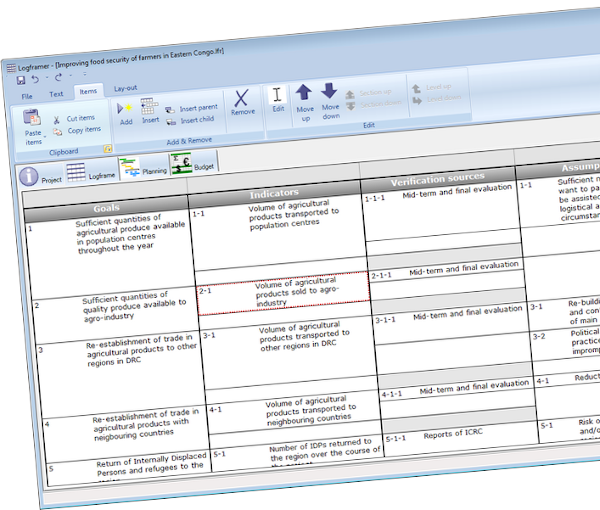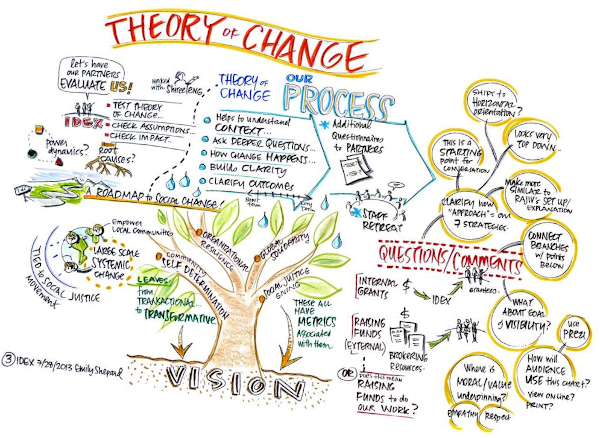ToC and the logical framework
So what’s the deal between Theory of Change and the logical framework approaches? Does ToC replace the logical framework?
 For some organisations it does: they use ToC to manage their projects and programmes instead of the logical framework. They use the diagram instead of the project logic column because the find the linear cause-and-effect structure too limiting. They combine it with a PME system that use indicators and they follow up the assumptions.
For some organisations it does: they use ToC to manage their projects and programmes instead of the logical framework. They use the diagram instead of the project logic column because the find the linear cause-and-effect structure too limiting. They combine it with a PME system that use indicators and they follow up the assumptions.
One reason for replacing the logframe with ToC is to be liberated of the straight jacket of donor procedures. Because the logframe has become an obligatory part of the contract with the donor, it has lost its flexibility. Using the logframe is not something that these organisations do to manage their projects and impact, but to manage their donor funding (which is not the same). It has become an obligatory number, a box-ticking exercise.
But originally the logframe was intended to be flexible. In every step of its development (LFA, PCM and RBM) more emphasis was put on true flexibility, true participation, true learning through M&E etc. But these were always very much restrained because of strict funding legislation and administrative procedures (red tape). So there is a fear that Theory of Change in time will also fall victim to such an evolution and that it will become a ‘Logframe on steroids’ – just another box-ticking exercise.
 The real potential and advantage that Theory of Change promises comes about when it is used on a strategic level, in combination with logical framework approaches to manage the interventions. This offers the best of two worlds. At the one hand, Theory of Change allows an organisation to see beyond its usual scope (specialisation, available resources, geographical location). It rightly sees change in a society as something that cannot realistically be achieved by a single actor – however well-funded it may be. It lays bare the complexity and many dimensions of change at this level. It clarifies the overall story of this change; the big steps that have to be taken.
The real potential and advantage that Theory of Change promises comes about when it is used on a strategic level, in combination with logical framework approaches to manage the interventions. This offers the best of two worlds. At the one hand, Theory of Change allows an organisation to see beyond its usual scope (specialisation, available resources, geographical location). It rightly sees change in a society as something that cannot realistically be achieved by a single actor – however well-funded it may be. It lays bare the complexity and many dimensions of change at this level. It clarifies the overall story of this change; the big steps that have to be taken.
Logframe approaches on the other hand remain very useful to take these big ideas (outcomes) and break them down in practical steps, intermediate outputs and everything practical that is needed to manage a project. They help you formulate a project in a participatory manner and organise the daily management of an intervention. That is, if you use them to really manage the project and not just to appease your donor.
So rather than replace the logical framework approaches, the Theory of Change can complement them and enrich your strategic thinking. The real advantage to this combination of ToC and logframes is that the ToC allows you to look beyond the scope of your own organisation and your own interventions. It broadens your view and allows you to show how your interventions contribute to a larger change movement, rather than pretending you’re doing everything on your own. However, this is precisely what many ToCs do, making them unrealistic and not really believable.





Add new comment